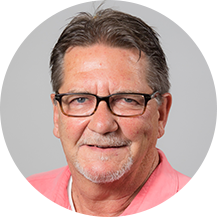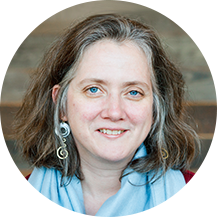How Can We Make a Difference in the Opioid Crisis?

Drug overdoses now claim more lives annually than motor vehicle accidents and gun violence. In 2015, more than 50,000 Americans died from drug overdoses; 33,000 of these deaths were caused by opioids, a class of drug that includes prescription painkillers, heroin, and synthetic opioids, such as fentanyl.
There is no doubt that communities throughout the United States are in the midst of an opioid crisis. But one of the hard truths about addressing the crisis is that there are no easy solutions.
“People are looking for a silver bullet to fix the problem,” says Carol Oliver, a prevention specialist at EDC. “It doesn’t exist. You just have to keep making progress where you can.”
Oliver recently joined EDC prevention specialists Chelsey Goddard and Gary Langis for a roundtable discussion about the opioid crisis. Here, they offer concrete ways to help communities—and people—in need.
Improve education
Education is one of the keys to getting out of this crisis. It starts with improving education for patients and their families. I’ve talked to people who ask, “How does the physician make sure I’m not going to get addicted? Can I trust that?” There’s some baseline information that people on prescription painkillers need to have—how much to take, when to take them, and how to tell when use is turning into abuse. Family members of people taking prescription painkillers need this information, too.
We also need to improve training for health providers. Every professional who has the authority to prescribe an opiate painkiller—physicians, physician assistants, nurse practitioners, dentists, even veterinarians—needs to have a thorough understanding of what opiates do and how addictive habits are formed.
So, both doctors and patients need to be better educated. And even if we just improved those conversations—so that patients knew the questions to ask, and doctors knew how to answer them—that would be amazing.
Reduce harm
A lot of people are actively using drugs but are not yet ready for treatment and recovery. They are at the epicenter of the crisis, and we can’t forget about them. So, one way to support the health of active users is through harm reduction measures—programs that seek to minimize the negative health impact of drug use.
These programs work. In New York, syringe exchanges have reduced HIV infection due to injection drug use by about 80 percent since the mid-1980s. In Massachusetts, a single naloxone distribution program has recorded 11,000 overdose reversals since 2010. And hospitals are increasingly coordinating with first responders, prevention counselors, and recovery coaches to follow up with overdose victims after they have been released from care. These are all successful public health responses to drug use. They focus on keeping people alive.
Vancouver operates a supervised injection facility, where drug users can safely use, and doctors are on hand to clean wounds, treat overdoses, and refer people to an onsite detox center. Hundreds of people have entered treatment because of this facility.
People often believe that harm reduction programs are just encouraging drug use. But none of the drug users I have ever met has asked for permission to use. They just do it. And if you look around most cities now, you’ll see unsupervised injection sites everywhere—a public park, an alleyway, a bathroom of a fast-food restaurant. People are dying—and a harm reduction approach can save many of them.
Talk about pain
So much of the current opioid crisis comes from people trying to deal with their pain, be it emotional or physical. There should be no shame in experiencing pain. We have made tremendous strides in how we treat pain, but pain management has become so stigmatized that many people prefer to self-medicate with painkillers and other drugs rather than seek formal treatment options. The stigma is fueling the opioid crisis.
We need to help people find healthier ways to cope. Pain clinics are one option. They specialize in helping people manage and treat chronic pain, and often offer physical therapy services, cortisone injections, and drug regimens to support patients’ health. They give people help and support.
We should talk more about pain—and recovery, too. It starts in elementary school with discussions about positive mental health, resilience, recovery, and mindfulness. It’s never too early to talk openly about these issues. And it’s what we have to do if we want children to live healthy, addiction-free lives.
Learn more about EDC's work in substance abuse prevention and treatment.


